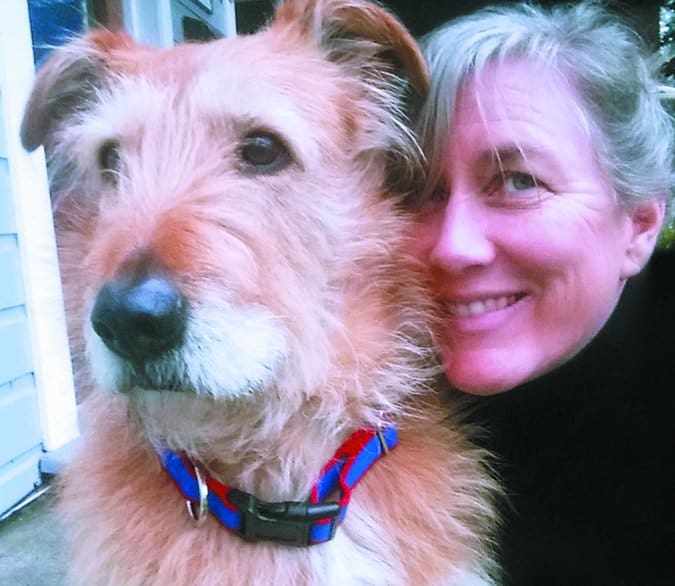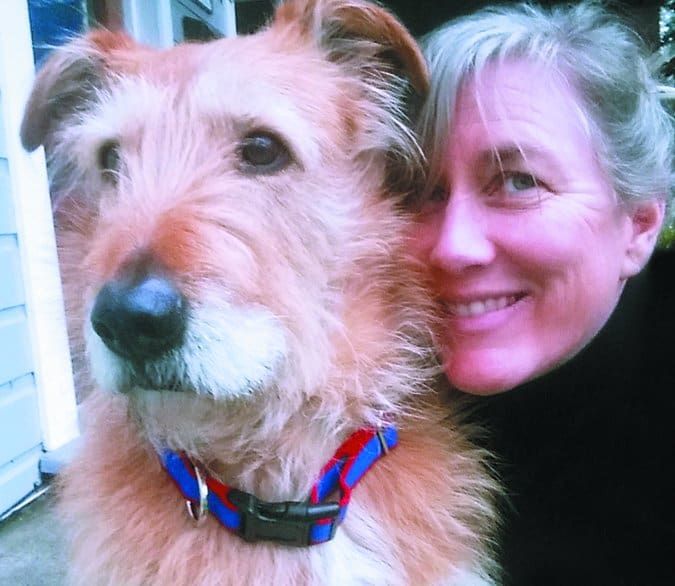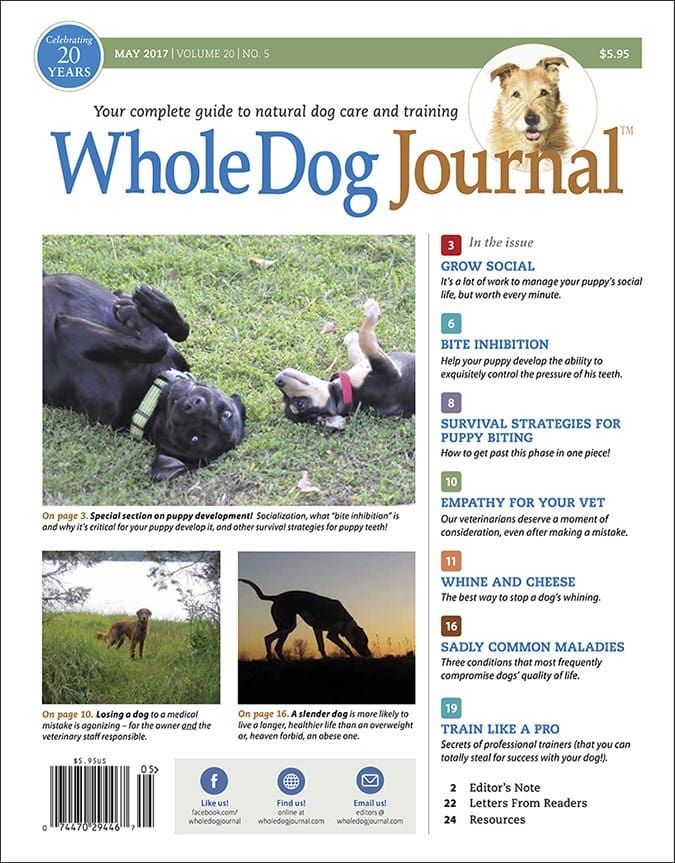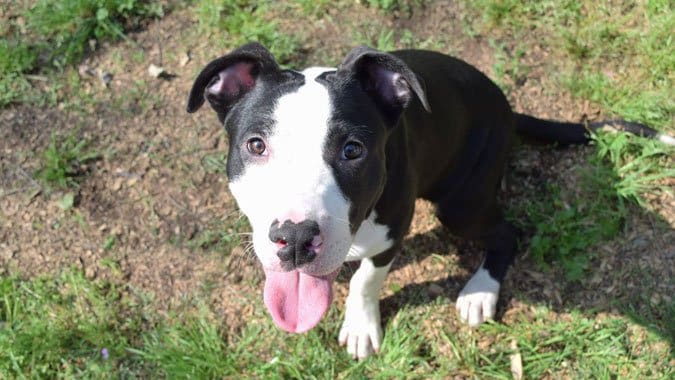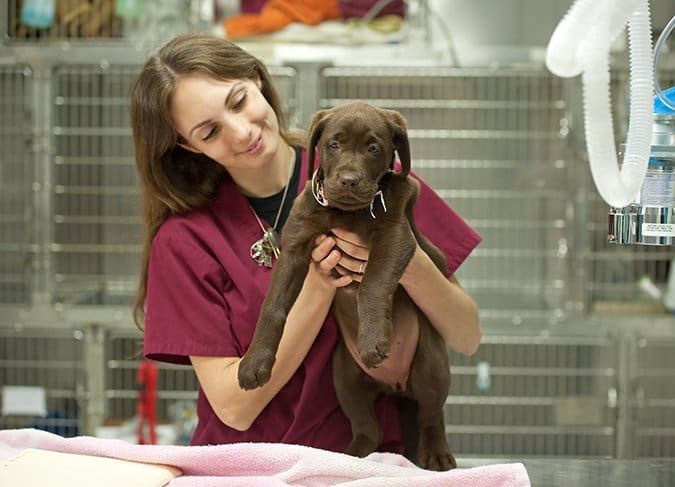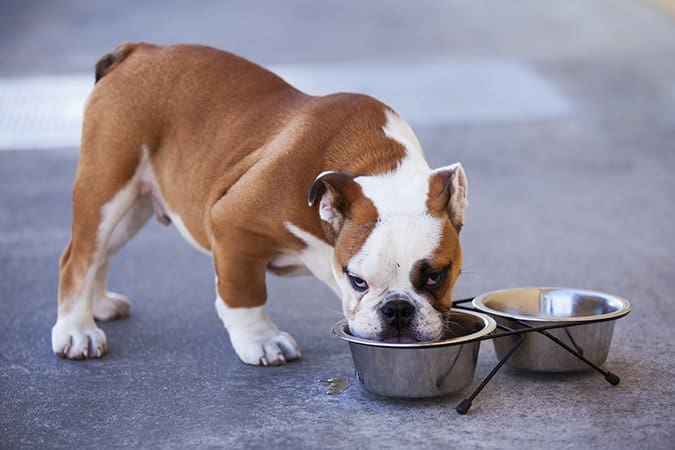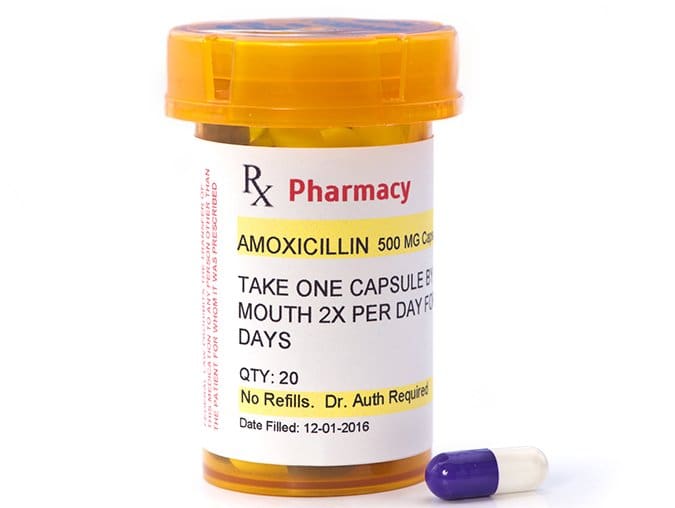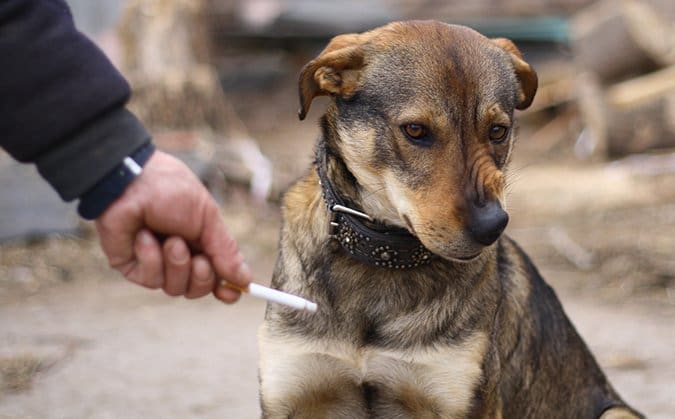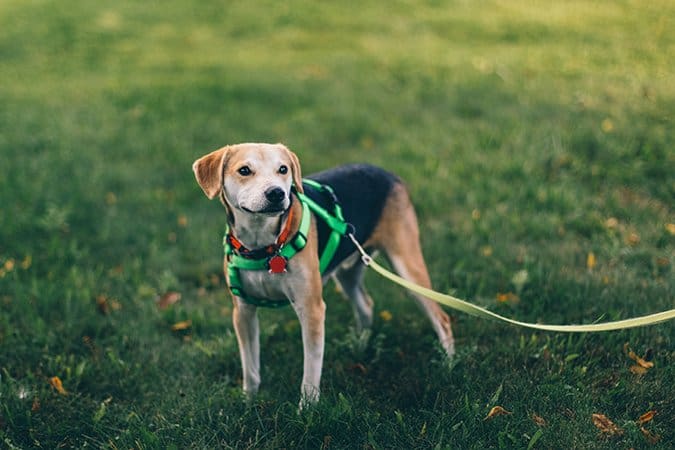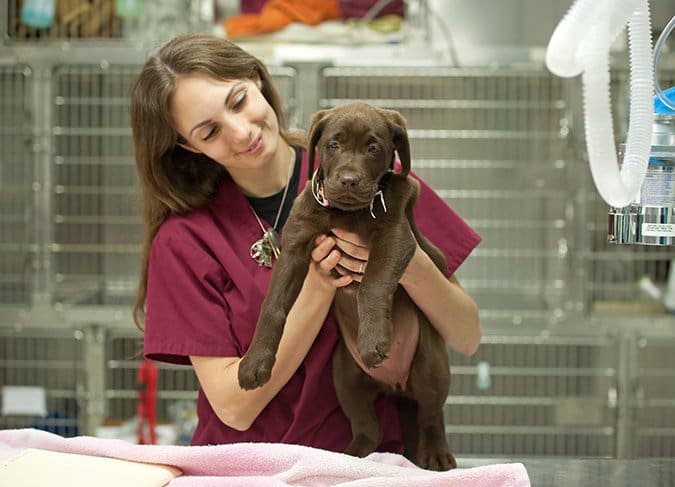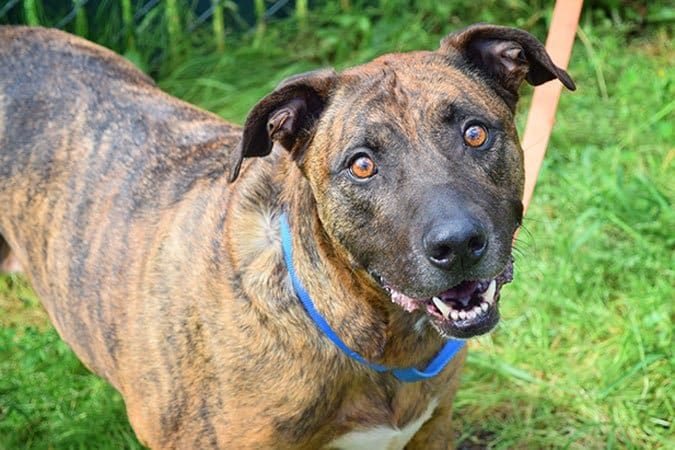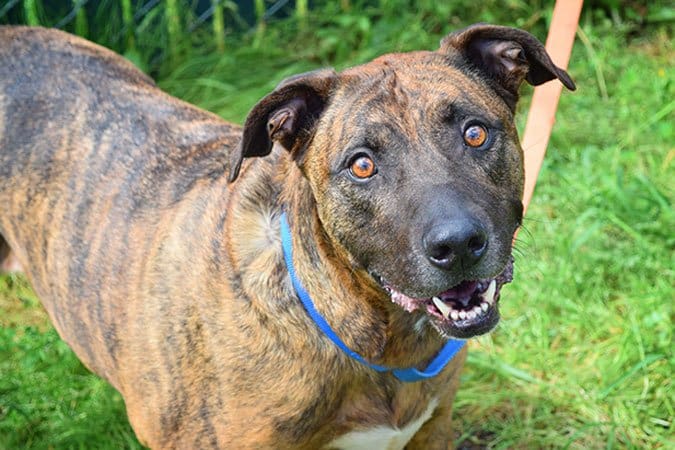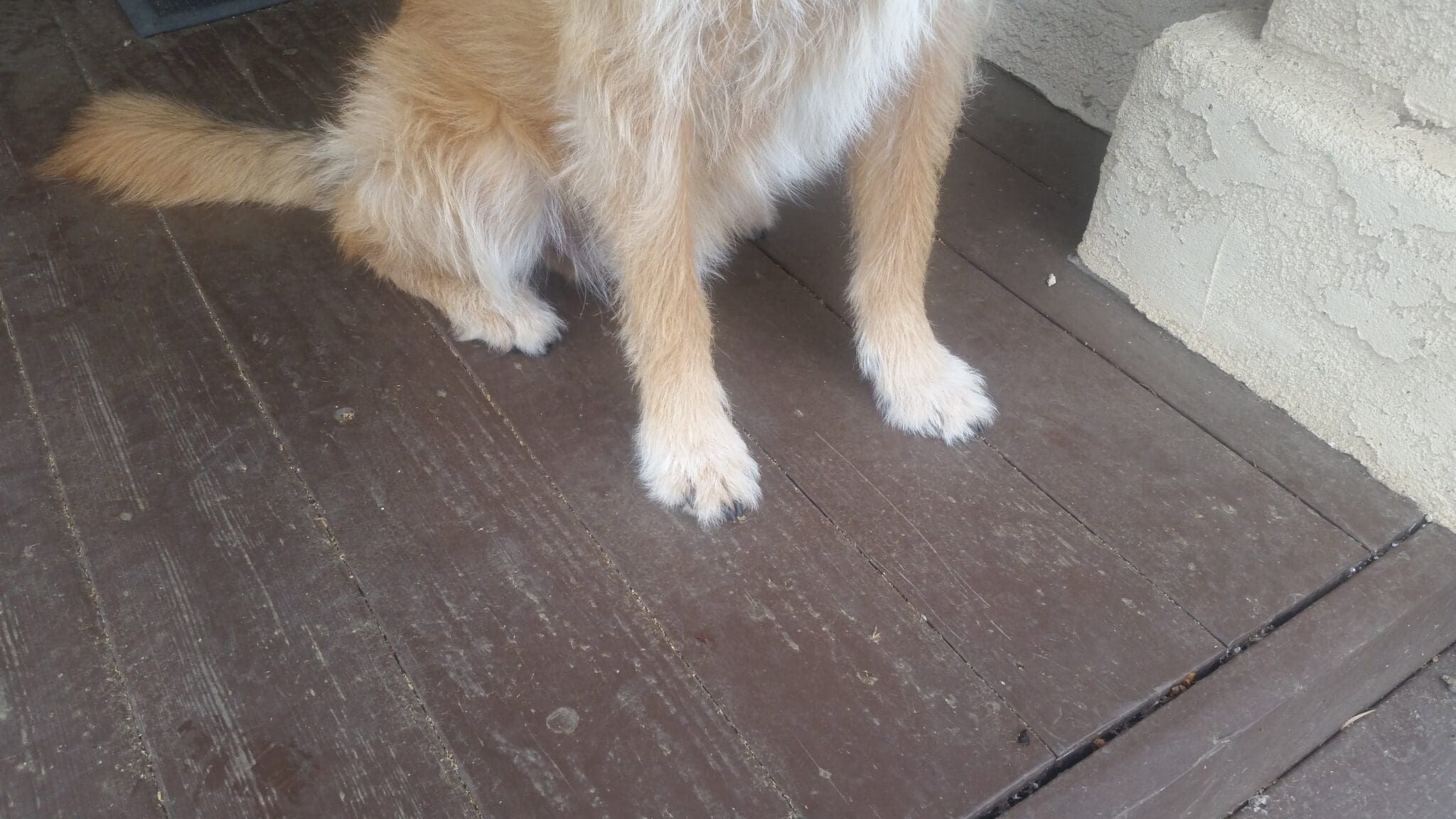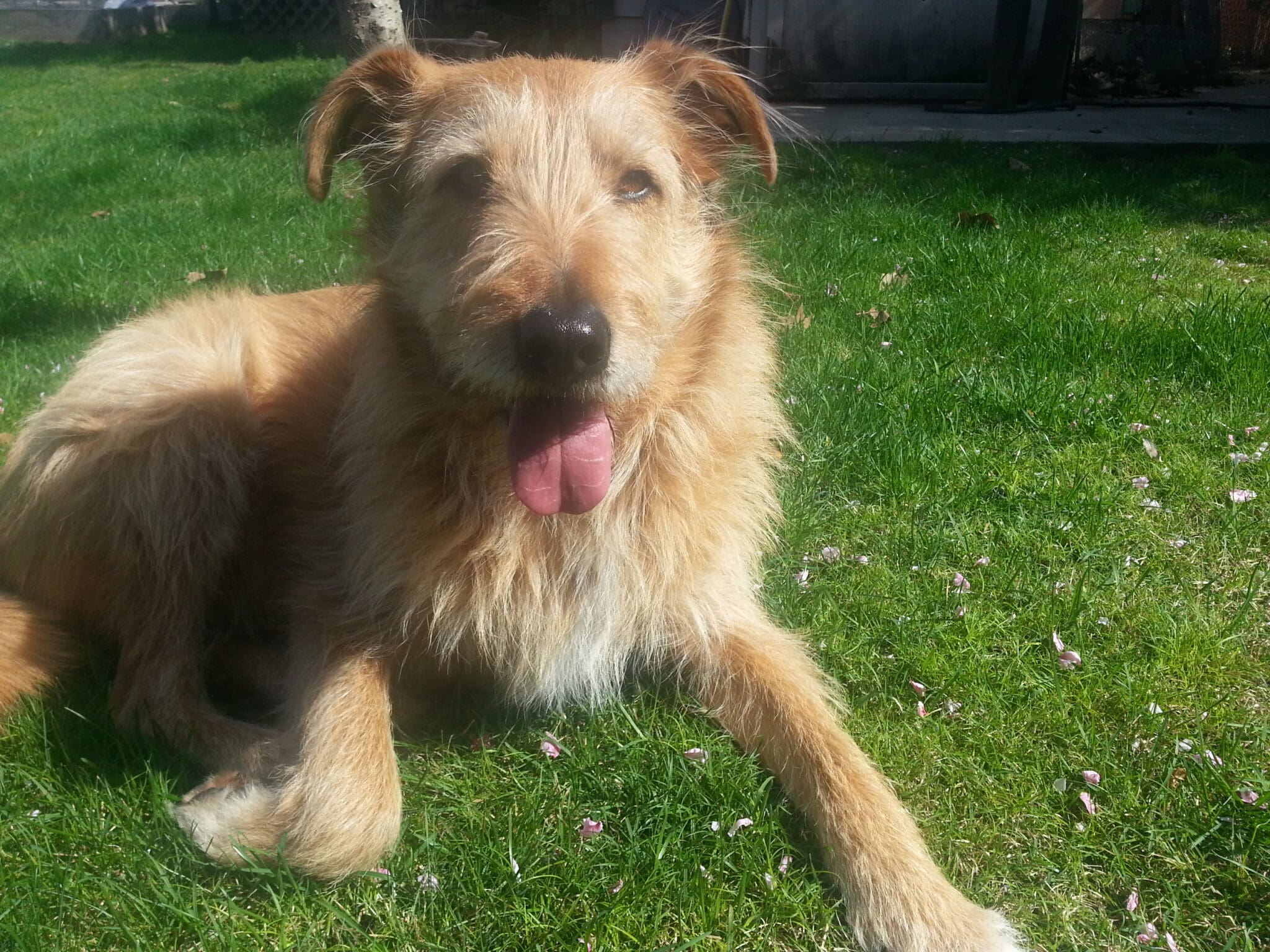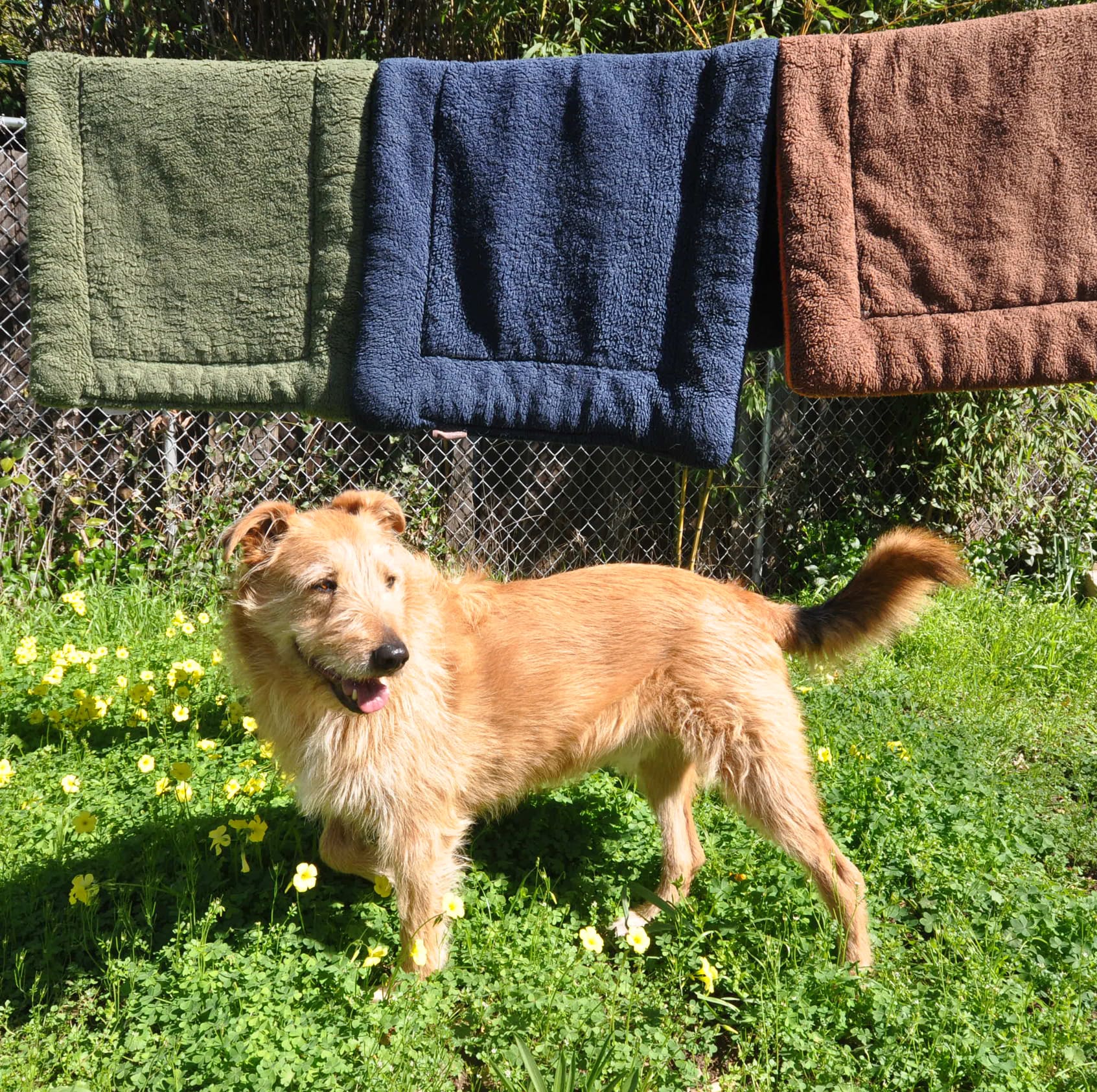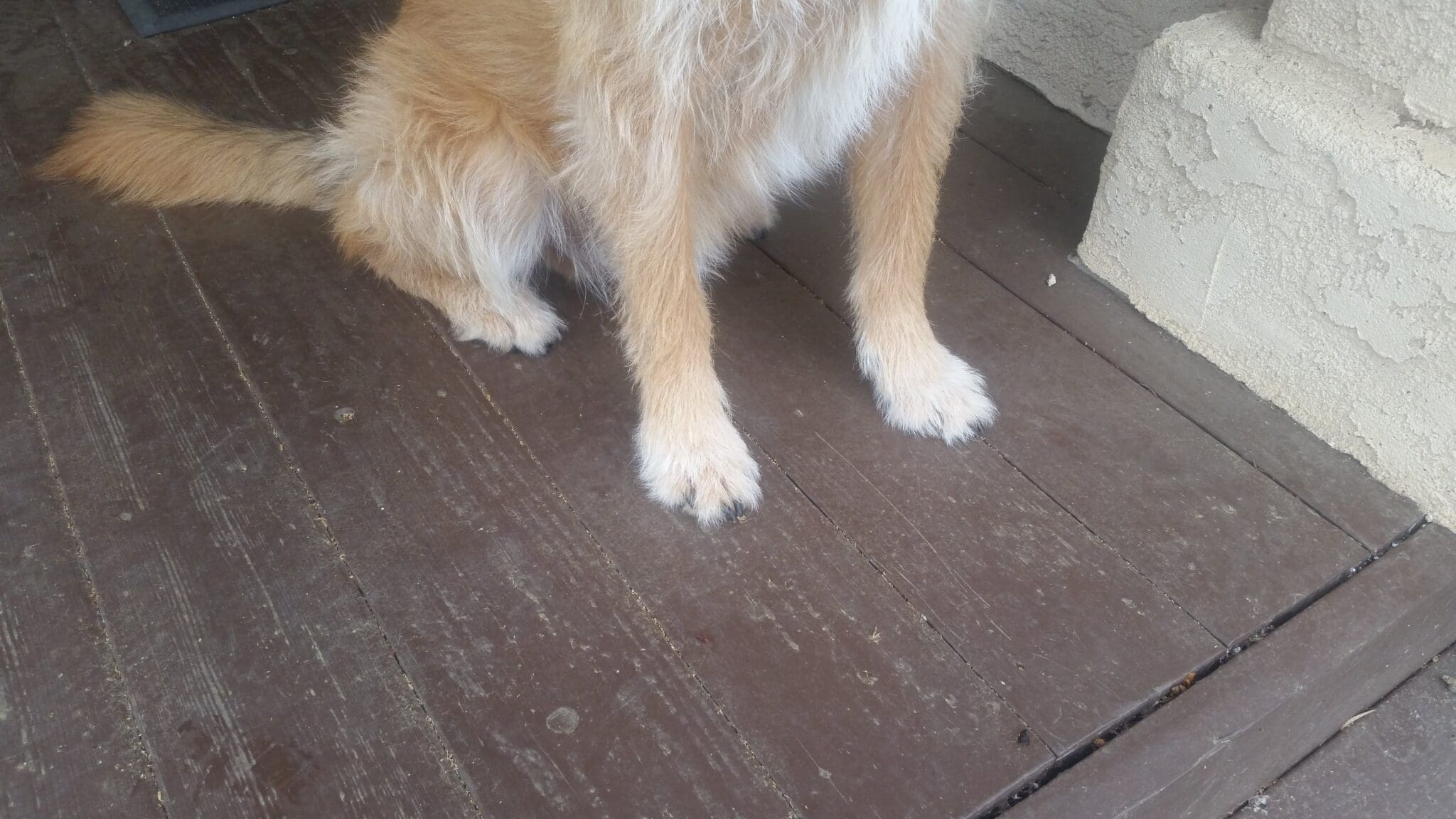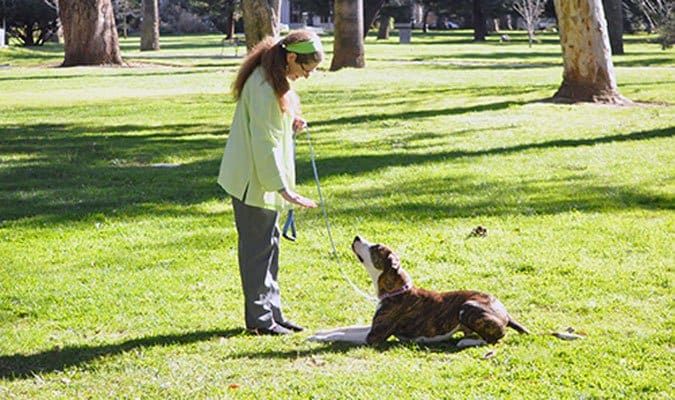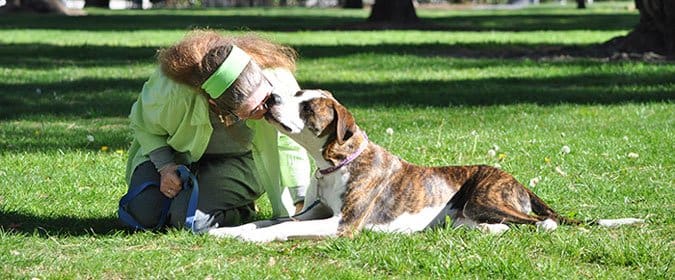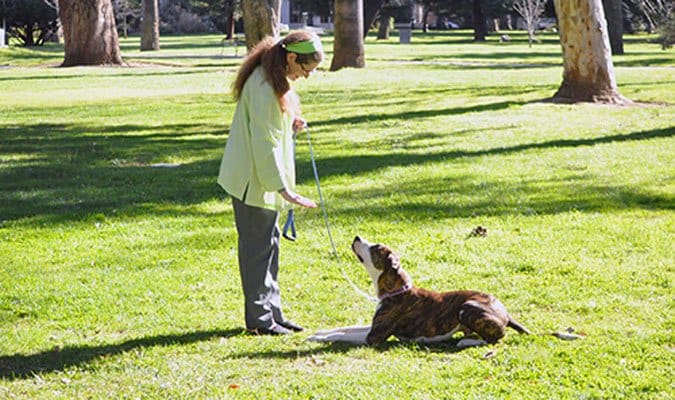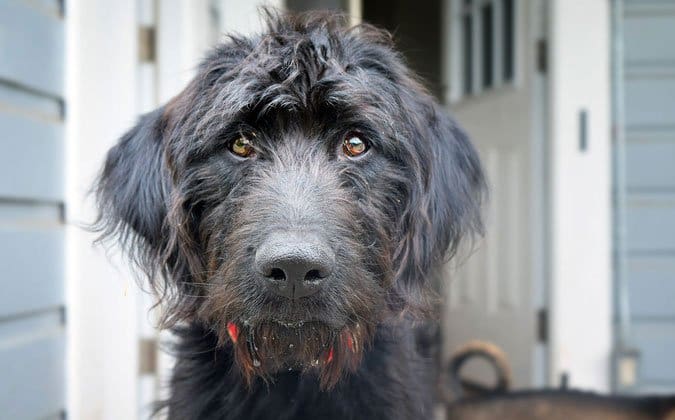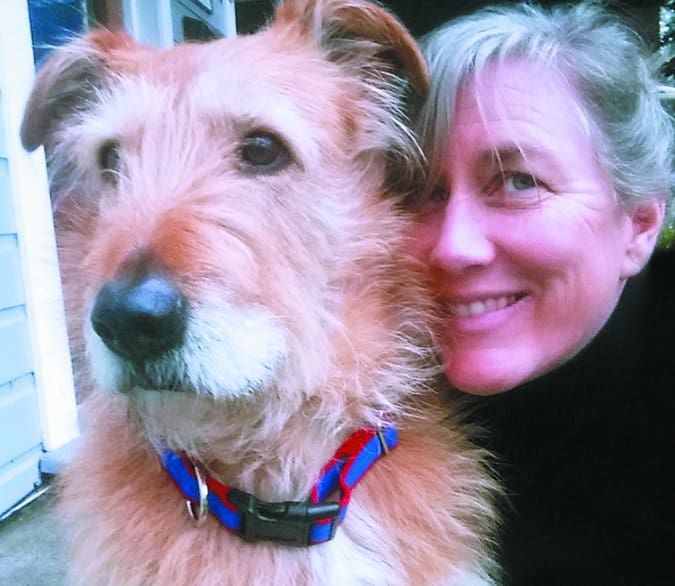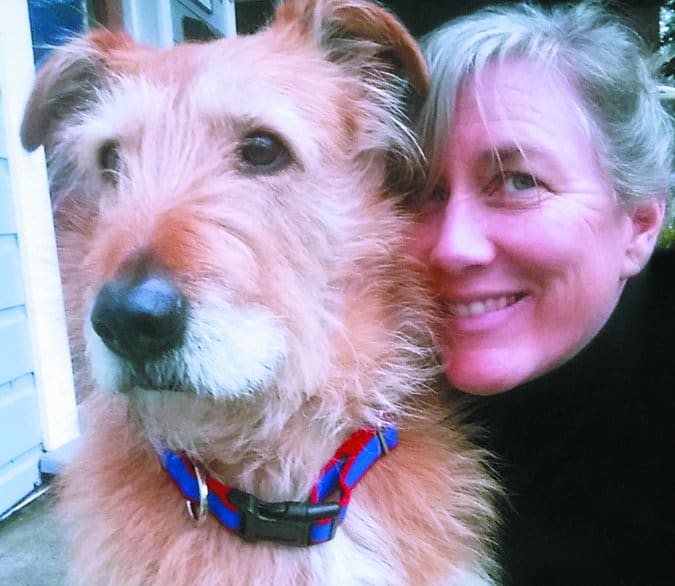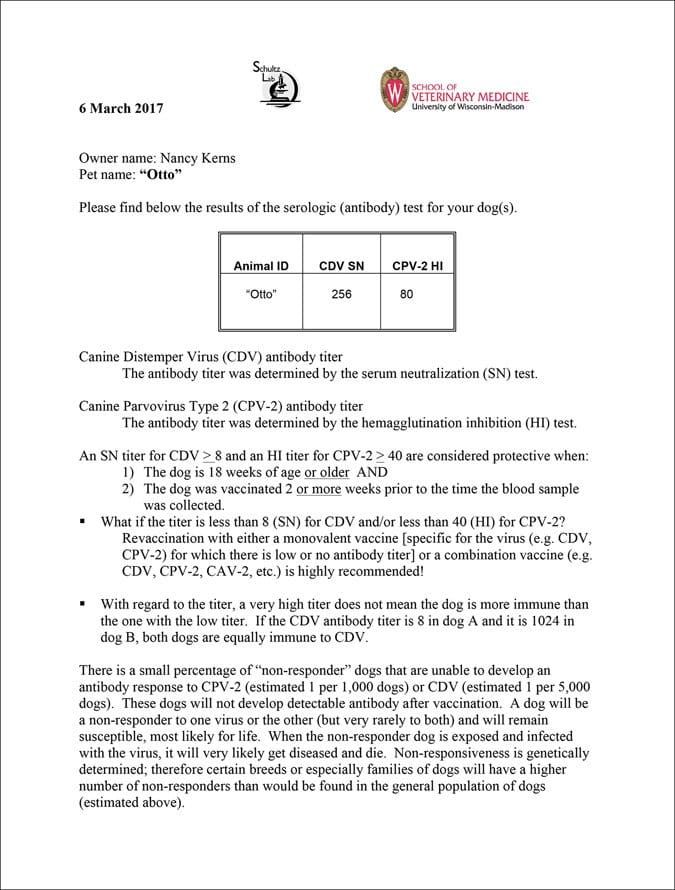Even the most athletic, lively dogs slow down as they age, just like their human companions. Exercise helps keep joints limber, but when it hurts to move, dogs tend to avoid moving, and their resulting inactivity makes the problem worse.
For many veterinarians, prescription drugs are a first choice for the treatment of chronic pain, while for some they are a last resort. Used well, drugs can make a world of difference for our older companions, but they are controversial because of their documented side effects. Would prescription meds improve your best friend’s life?
Many WDJ articles about aging dogs have explored nutritional, herbal, aromatherapy, and exercise treatments for arthritis. According to holistic veterinarians, these and other drug-free approaches are worth trying. Unfortunately, they don’t work for every dog, and they may not work quickly.
In his book, Dr. Petty’s Pain Relief for Dogs: The Complete Medical and Integrative Guide to Treating Pain, (Countryman Press, 2016), Michael C. Petty, DVM, calls attention to pain symptoms that readers may not notice or consider important.
This is a mistake, he warns, because pain interferes with every aspect of a dog’s life. He begins the book by noting that most veterinarians who practice pain management have a story about their relationship with pain. His began in 1984, when his 64-year-old mother died in agony from breast cancer while her physician refused to prescribe morphine to ease her final hours. “I vowed that as a caretaker and steward entrusted with an animal’s health,” he writes, “I would never be indifferent to pain.”
As Denise Flaim explained in 2015, pain in animals used to be ignored, but attitudes are changing. Increasingly, veterinarians and pet owners are sensitive to their animals’ pain and motivated to relieve it. In fact, pain management for pets has become a medical specialty. (Click here to find veterinarians who belong to the International Veterinary Academy of Pain Management.)
How to Recognize Pain in Dogs
A major problem in the diagnosis and treatment of canine pain is that many dog owners don’t notice its symptoms, or they notice the dog is slowing down but don’t understand why. Another is that not everyone takes canine pain seriously, so it’s easy to overlook.
You can help your dog live a pain-free life by noticing changes in posture, gait, and activity level. Tell your veterinarian if your dog exhibits any of the following symptoms of pain:
- Shows reluctance to walk on or difficulty getting up and down on slippery surfaces.
- Struggles to walk up or down stairs.
- No longer jumps onto or off furniture or car seats.
- Gets up from a down position with the front legs first.
- Seems to have trouble lying down or finding a comfortable position.
- Declines to participate in favorite activities, especially running and jumping.
- Develops abnormal wear on nails, or tends to walk with a foot turned under or dragging.
- Seems reluctant to play or no longer initiates play
- Starts taking exception to being groomed or petted.
- Experiences sleep interruptions.
- Develops a decreased appetite.
- Begins experiencing “accidents” or incontinence in the house.
For more information on signs of pain in dogs, read our article Dog in Pain: 12 Signs and What You Can Do to Help.
A comprehensive pain exam, Dr. Petty explains, involves a visual inspection of your dog’s posture and gait, followed by a thorough hands-on exam and appropriate lab work in order to determine the pain’s underlying cause. “When it comes to signs of chronic or even short-term persistent pain,” he says, “simply treating the signs of pain with medications is not enough. In circumstances like this a proper diagnosis is required.”
Chronic pain can be caused by osteoarthritis, neurological disorders, injuries, and illnesses. Often, a condition has been progressing for months or even years before a caregiver notices a symptom for the first time, such as limping or a reluctance to chase a ball.
Even when a dog is favoring one leg or obviously limping, her pain may be caused by something far from the leg, such as a disc in the neck. As Dr. Petty explains, a ruptured cruciate ligament in the knee, spinal arthritis, bone cancer, a severe muscle injury, or disc disease are impossible to distinguish from one another by observation only. A pain-oriented veterinarian asks detailed questions, examines the dog with careful palpation, takes x-rays as needed, and does a neurological exam to determine the pain’s cause and best treatment.
The most common canine illness is osteoarthritis, which affects four out of five dogs. But arthritis has many possible causes, making it a complex problem involving not only joints but also their surrounding structures. Osteoarthritis develops slowly, so it’s often not noticed until it has progressed to an advanced stage. There is no magic cure for osteoarthritis, and its management usually depends on a combination of treatments that continue through the dog’s life.
For more on diagnosing arthritis in dogs, read our article Identifying Arthritis in Dogs.
FDA-Approved Pain Medications for Dogs
Hundreds of drugs developed for human pain are used by veterinarians to treat chronic pain in dogs, but only nonsteroidal anti-inflammatory drugs (abbreviated as NSAIDs and pronounced “EN-seds”) and two non-NSAID prescription drugs (Galliprant and Adequan) have been approved by the U.S. Food and Drug Administration (FDA) for canine use.
The most familiar NSAID is aspirin, which is effective in the treatment of pain associated with canine arthritis. However, although there are numerous “dog aspirin” products on the market, aspirin is not FDA-approved for use in dogs. According to Dr. Petty, “the administration of even a few doses of aspirin has been shown to cause inflammation of the gastric mucosa or lining of the stomach.” He considers all types of aspirin (plain, buffered, or coated) too dangerous for canine use.
If your veterinarian prescribes aspirin for your dog, be sure to discuss its dosage, potential side effects, and cautions before using it.
The FDA approved the first NSAID for use in dogs (carprofen, brand name Rimadyl, manufactured by Pfizer) 20 years ago. Since then, several other NSAIDs have been developed for dogs.
FDA-approved NSAIDs for dogs include etodolac (Etogesic), meloxicam (Metacam), deracoxib (Deramaxx), firocoxib (Previcox), tepoxalin (Zubrin), and carprofen (Novox, Vetprofen, and Rimadyl). These drugs have similar actions, contraindications, benefits, and side effects. Their primary influence is on the cyclooxygenase or COX pathway, in which chemical reactions create prostanoids, a family of lipid mediators that cause pain and inflammation in nerve endings and in the spinal cord.
COX-inhibiting NSAIDs help block this reaction, thus reducing pain. But some chemicals created through the COX pathway are important to proper kidney function and protection of the gastrointestinal tract. Reducing the body’s prostanoids reduces pain but contributes to the most common adverse reactions associated with NSAIDs. These include gastrointestinal ulceration, kidney failure in dogs with kidney disease, liver failure in dogs with liver disease, and liver failure in some dogs with no previous liver problems.
Symptoms include vomiting, diarrhea, loss of appetite, and depression, all of which should be watched for and if noticed, reported to your veterinarian, and the medication should be stopped at once.
Today, carprofen is very commonly prescribed for canine pain, but its ubiquity doesn’t mean it’s not without the potential for drastic and even fatal side effects due to liver or kidney problems, sometimes causing death within days. Any breed of dog can react to carprofen, but reportedly, Labrador Retrievers are more commonly affected than other breeds.
Problems with carprofen and other NSAIDs most often occur shortly after starting the drug. It has been observed that carprofen has caused a disproportionate number of NSAID-related dog deaths, although this could be because it is prescribed more than other NSAIDs.
NSAIDs should never be combined with corticosteroids (such as prednisone), aspirin, or other NSAIDs, or herbs that may contribute to bleeding or ulceration, such as white willow bark (Salix alba, the original aspirin).
Despite their potential side effects, NSAIDs are an effective first treatment for many dogs with osteoarthritis. By reducing the dog’s pain, they help increase activity and exercise, which slows the progression of arthritis.
While NSAIDs should not be combined with each other, they are often combined with other drugs for improved results. In many cases, adding a compatible drug may permit the reduction of the dosage or frequency of the NSAID without a loss of effectiveness.
To ensure an NSAID does not adversely affect the liver or kidneys, it’s recommended to have blood tests done prior to medication and again two to four weeks after starting the NSAID. Blood tests should be repeated every three months to a year while your dog is being given an NSAID.
It can be dangerous to switch from one NSAID (including aspirin) to another, or from an NSAID to prednisone or vice versa. It’s best to wait at least a week in between, and preferably longer, before starting the new drug. This is particularly important when you are switching from one of the older-generation NSAIDs, including aspirin and white willow bark. If you switch from NSAIDs to prednisone, a three-day waiting period is considered sufficient.
Galliprant
Aratana Therapeutics’ Galliprant was approved by the FDA in March 2016 for treating canine osteoarthritis. Galliprant is a piprant antagonist drug that inhibits the production of prostaglandins (lipid compounds with diverse hormone-like effects). NSAIDs target the entire cyclooxygenase or COX pathway, including the pathway’s protective functions, which explains most of their adverse side effects. By contrast, Galliprant specifically blocks the EP4 receptor, which is the primary mediator of canine osteoarthritis pain and inflammation, without involving the COX pathway.
Because of its documented safety, Galliprant does not require expensive monitoring the way NSAIDs do, and it is said to relieve pain in dogs who are not able to tolerate NSAIDs. It is considered safe for dogs age nine months and older. Appropriate monitoring is recommended for long-term use.
Galliprant should not be used in combination with COX-inhibiting NSAIDs or corticosteroids. Its most common side effects, all of which are reported to be mild and infrequent, include vomiting, diarrhea, decreased appetite, and lethargy.
Adequan
An injectable joint protectant, Adequan Canine (polysulfated glycos-aminoglycan, or PSGAG) from Luitpold Pharmaceuticals, Inc., is the only FDA-approved injectable, disease-modifying drug for canine osteoarthritis. Injected intramuscularly, Adequan stimulates cartilage repair, soothes and lubricates joints, reduces joint damage, and relieves pain.
Adequan travels to joints within two hours of injection and remains in joints for three days. It is administered twice weekly for up to four weeks with a maximum of eight injections. Signs of improvement usually appear within one month.
The drug’s most common side effects are stinging at the injection site and (less common) an upset stomach, vomiting, diarrhea, depression, or abnormal bleeding. Adequan should not be used in dogs showing hypersensitivity to PSGAG or dogs with kidney disease, liver disease, or known or suspected bleeding disorders.
Although such treatment is considered “off-label” because it differs from the manufacturer’s protocol, some veterinarians continue to give Adequan injections at monthly intervals, or they repeat the prescribed protocol whenever the dog’s symptoms return.
It may not be necessary to inject this drug into muscles. Some veterinarians inject it subcutaneously, which is less painful for the dog and easier for owners to do themselves at home. A similar product, Cartrophen Vet, which is sold in Canada and other countries, is given subcutaneously.
Tramadol and Other Opioid Drugs
Tramadol (Ultram) is a synthetic opioid that appears to be safer than most narcotics and can be used for long-term chronic pain treatment. While not FDA approved for dogs, it’s widely prescribed by veterinarians.
Tramadol’s main action in dogs is as a serotonin and norepinephine reuptake inhibitor. Serotonin and norepinephrine are neurotransmitters, substances that carry impulses from one nerve to another. Tramadol’s effect on neurotransmitters interrupts the transmission of pain signals. It acts on pain symptoms only and does not reduce inflammation. Tramadol is considered safe to combine with NSAIDs or with prednisone.
Tramadol should not be given with Monoamine oxidase inhibitors (MAOIs). Examples include Anipryl/l-deprenyl/selegiline, and the Preventic tick collar, which contains Amitraz, another MAOI. It may also be dangerous to combine tramadol with St. John’s wort (Hypericum perforatum). In addition, tramadol should be used with caution in combination with selective serotonin reuptake inhibitors (SSRIs) such as Prozac, Zoloft, and Paxil, as well as tricyclic antidepressants such as Elavil and Clomicalm.
Because tramadol is metabolized through the liver and kidneys, its dosage must be reduced for dogs with liver or kidney disease. High doses may trigger seizures; it should be used with extreme caution in seizure-prone dogs.
Ultracet, which is tramadol combined with acetaminophen (Tylenol) for humans, can be dangerous for dogs.
Studies of tramadol’s long-term effectiveness have shown possible problems with absorption from the stomach or a decrease in the liver’s ability to utilize the drug. Recent research shows that tramadol may not work as well for dogs as it does for people. Higher doses, given more often, may be needed for adequate pain control, and it may work better for some types of pain than for others. Tramadol works best when combined with NSAIDs rather than used in place of them.
Opioid drugs (narcotics) are not FDA approved for canine use, but many veterinarians prescribe them for pain relief. Examples include oral hydrocodone (which can be combined with NSAIDs for additional pain relief), Vicodin (a combination of hydrocodone and acetaminophen, which cannot be combined with NSAIDs), codeine, oxycodone, and transdermal fentanyl (Duragesic) patches. Their narcotic effects make these drugs best for short-term use.
Corticosteroids
The strongest anti-inflammatory drugs are corticosteroids such as prednisone, methylprednisolone (Medrol), and dexamethasone, but their significant side effects make them most appropriate for short-term use. Corticosteroids are not FDA-approved for canine use but are widely prescribed by veterinarians.
Steroids can suppress the immune system, increase appetite (causing weight gain), increase thirst and urination, lead to muscle loss and weakness, and cause gastric ulcers.
NSAIDs are not compatible with steroids and should be discontinued at least 72 hours before beginning steroid treatment. Steroids can be combined with other pain medications mentioned here except for Galliprant.
Prednisone and other corticosteroids are usually given in large initial doses, then gradually reduced to the lowest dose that controls symptoms. Giving them every other day and giving them with food helps reduce side effects. Steroids should never be stopped abruptly but rather tapered off.
Long-time WDJ contributor Mary Straus had a Shar-Pei, Piglet, who lived to be 17 and was mobile to the end, thanks to Mary’s attentive care and frequent trips to the veterinarian to adjust Piglet’s medication regimen. Straus turned to prednisone in what turned out to be Piglet’s last six months, explaining, “This allowed her to continue to be mobile after NSAIDs were no longer effective.”
Medical Marijuana
Even though marijuana (Cannabis sativa) has gained public acceptance and is legal for medical and recreational use in several states, a confusing array of federal, state, and local regulations, and a lack of scientific studies, make its use controversial.
When it comes to treating canine pain, marijuana and other cannabis products have a following among pet owners and veterinarians. In 2013, Mary Straus described the benefits of marijuana for canine pain control and the pioneering work of Doug Kramer, DVM, whose Enlightened Veterinary Therapeutics clinic in California offered medical marijuana protocols for pets in his palliative and hospice care practice. Sadly, Dr. Kramer died in August 2013 before he completed a clinical trial, and his clinic closed.
Given the dearth of studies, there is no reliable information about what dosage of marijuana is safe and effective for pets. Concentrated forms (such as oils, tinctures, and other extracts) in particular can cause toxicity even in small amounts. This problem is further complicated by the variation in strengths for each of these based on the strain of marijuana grown, the timing of the harvest, and the preparation of the medical product.
Marijuana contains more than 60 chemicals called cannabinoids, the most important of which are cannabidiol (CBD), which has therapeutic properties, and tetrahydrocannabinol (THC), which is psychoactive but may provide additional benefits when small amounts are combined with CBD.
Because of its very low THC content, hemp (a Cannabis sativa plant traditionally used for making rope, paper, and fabric) is not considered intoxicating. Instead, its cannabinoids are known for their anti-inflammatory, analgesic, and anti-spasmodic properties. Hemp capsules, oils, and other products containing cannabinoids derived from hemp are sold throughout the U.S. for human and canine use without restriction.
Doxycycline
The familiar tetracycline antibiotic doxycycline, which is widely used to treat bacterial infections, especially those carried by ticks, has been shown to have anti-inflammatory properties and actually reduce the production of enzymes that lead to the progression of arthritis.
The discovery that human patients with arthritis improved while taking tetracycline drugs led to clinical trials, including some with dogs. Other trials have shown improvement in knee cartilage, other joints, and cartilage ulceration in both humans and dogs taking low doses of doxycycline.
The mechanism that causes improvement is not well understood. Researchers theorize that human rheumatoid arthritis is triggered by the immune system battling infection, and when antibiotics clear the infection, symptoms improve. Although some studies have shown little or no improvement in humans with osteoarthritis, some canine studies show a good response to that disease.
Gabapentin
Gabapentin (Neurontin) is an anticonvulsant and pain relief medicine intended for the relief of neuropathy (nerve pain). It is similar in structure to GABA, a chemical messenger found in the brain, and it relieves or reduces pain by inhibiting the release of glutamate, which is a type of neurotransmitter. Gabapentin has been shown to be effective in combination with NSAID medications.
Because gabapentin can cause deficiencies of vitamins D, B1, and folate as well as calcium, it is important to provide a high-quality canine vitamin-mineral supplement in combination with the drug.
Gabapentin for dogs is administered in tablets or capsules. Do not administer liquid formulations intended for humans, as they may contain Xylitol, which is toxic to dogs.
Note: Most dogs build a tolerance to Gabapentin over time so that the starting dose becomes ineffective. Higher doses are then prescribed.
Amantidine
Originally developed as an antiviral drug to prevent Asian influenza, amantidine (Symmetrel) found success as a treatment for the symptoms of Parkinson’s disease. More recently, veterinarians began prescribing amantadine for chronic pain in dogs with arthritis, cancer, and disc disease. It has been shown to improve the effectiveness of NSAID medications when combined with them. Amantidine is administered daily for one to two weeks, at which point it can be discontinued or resumed. Dogs with kidney problems receive lower doses. Reported side effects include agitation, diarrhea, flatulence, and dizziness. If any of these symptoms occur, the medication should be discontinued and your veterinarian notified.
Amantidine can interact with heart medications, antibiotics, and diuretics, any of which can reduce the drug’s effectiveness, while antihistamines can increase its effects and induce a state of agitation.
Other Drugs
Used alone or combined with narcotics, NSAIDs, or steroids, some antidepressants relieve pain and discomfort in dogs with arthritis. These medications are not FDA approved for canine use but are prescribed by many veterinarians. Drugs in this category include amitriptyline (Elavil Rx) and other tricyclic antidepressants such as clomipramine (Clomicalm).
These medications should be administered under veterinary supervision as they require careful study, especially if they are used in combination with other drugs.
What You Can Do for Your Dog With Arthritis
1. Schedule a veterinary exam as soon as you notice signs of pain or lameness in your dog.
2. Before giving any medication to your dog, ask your veterinarian about any possible drug interactions or contraindications.
3. Note your dog’s responses (good or bad) to any prescribed medications on a calendar or journal. Memory is fallible, and your vet needs solid information in order to tailor doses and changes in dosing frequency for maximum benefit to your dog.
Montana resident CJ Puotinen is the author of The Encyclopedia of Natural Pet Care and other books.
